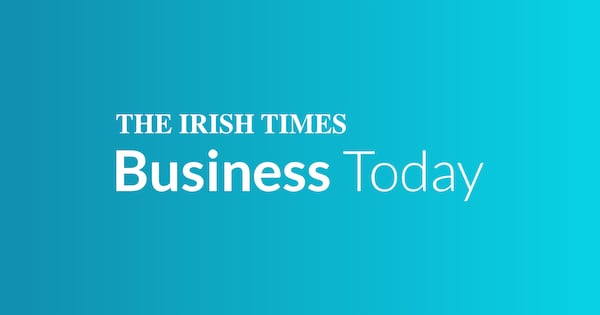The pharmaceutical industry is known to have the biggest lobbying budget in Washington. Firms such as Pfizer, Merck and Eli Lilly pay an army of hired advocates millions of US dollars a year to make the case for the industry.
Pharmaceutical firms spent $294 million (€250 million) on federal lobbying alone in 2024, one estimate has suggested.
And it shows.
Despite being the main driver of the US’s large trade deficit (in goods) with the European Union, the object of so much Maga grandstanding, the sector has so far escaped tariffs.
Officially the Trump administration is conducting what is known as a Section 232 investigation into the national security implications of relying on foreign supply chains for vital medications.
As part of that process, pharma firms, industry bodies and others made representations to the US government warning that the imposition of tariffs on the sector could trigger shortages and reduce access to medicines.
Perhaps fearful of the political fallout, Donald Trump has so far kept his powder dry.
The landing zone for EU-US trade negotiations is now expected to include – at a minimum – 10 per cent tariffs on EU exports with carveouts for pharma and semiconductors, a far cry from the EU’s initial zero-for-zero offer, but, if it materialises, a win for Big Pharma.
The US is the largest and most lucrative drug market in the world for manufacturers largely because US consumers pay the highest prices.
The main driver of these high prices is the US’s complex healthcare system, which includes a large private insurance industry with multiple intermediaries.
In other countries, more centralised systems mean that officials can bargain harder on price.
In 2021, an investigation by the US government accounting office found that prescription drugs in the US were on average two to four times more expensive than in Australia, Canada and France.
Trump in his first term and then Joe Biden attempted to get at – as they saw it – excessive drug-pricing, particularly the cost of life-saving drugs such as insulin, but with little success.
This time around Trump, now in his second term in office, has vowed to force drugmakers to lower prices by 30 per cent to 80 per cent.
In May he signed an executive order to implement a so-called “most favoured nation” policy in an effort to tie US drug prices to the lowest price in other wealthy nations.
“Big Pharma will either abide by this principle voluntarily or we will use the power of the federal government to ensure we are paying the same price as other countries,” he said.
The US Food and Drug Administration (FDA), the most influential pharma regulatory body in the world, has also announced a new fast-track approval programme for “novel” drugs.
One of the qualifying criteria is “increasing domestic drug manufacturing”, which is known to have raised eyebrows among pharma firms here.
Eli Lilly could, in theory, make the ingredients for its weight-loss drugs in the US rather than in Ireland, but moving production would involve a major commitment of resources and could take years.
It would also involve paying the US’s headline 21 per cent tax rate on profits rather than Ireland’s 12.5 per cent. It would have to pay a 15 per cent top-up rate from next year.
But it’s not obvious if any of these threatened pharma crackdowns will result in a major onshoring to the US of pharma manufacturing. Trump is making a lot of noise without necessarily applying a big stick.
There is also emerging evidence that Republican lawmakers have been buying pharma stock in the midst of the market volatility caused by US tariffs.
According to Politico, far-right congresswoman and vaccine sceptic Marjorie Taylor Greene and others have disclosed purchases of stocks in pharmaceutical companies since Trump took office on January 20th.
Ireland’s exposure to the US pharma sector – the State plays host to most of the big US players while pharma exports account for nearly half of our €224 billion goods export trade (with the US being the largest single market) – might therefore prove an asset rather than a liability.
“With both trade in services and in pharmaceuticals currently outside the scope of the Trump announcements, Ireland is insulated to some degree in the short run,” the Economic and Social Research Institute (ESRI) said in its latest quarterly bulletin last week.
Trump wants to resurrect his country’s ailing manufacturing base and correct the US’s large trade deficit with Europe but not at the expense of hurting US firms. Luckily for Ireland, the foreign direct investment sector here is predominantly American.
Since 2013, when Apple boss Tim Cook was hauled before a United States senate committee to answer questions about his company’s tax arrangements in Ireland, the State has faced multiple threats to its economic model with US multinationals in the crosshairs.
But even when change, potentially damaging change, has come – the ending of the so-called “double Irish” tax scheme in 2014; the European Commission’s €13 billion Apple tax ruling in 2016; Trump’s tax reforms in 2017; a new Organisation for Economic Co-operation and Development-brokered minimum global tax rate in 2024 – we still seem to come out on top.
That winning streak will have to come to an end at some point and tariffs could be the straw that breaks the camel’s back, but for now the damage is limited thanks in part to lobbying from Big Pharma.













